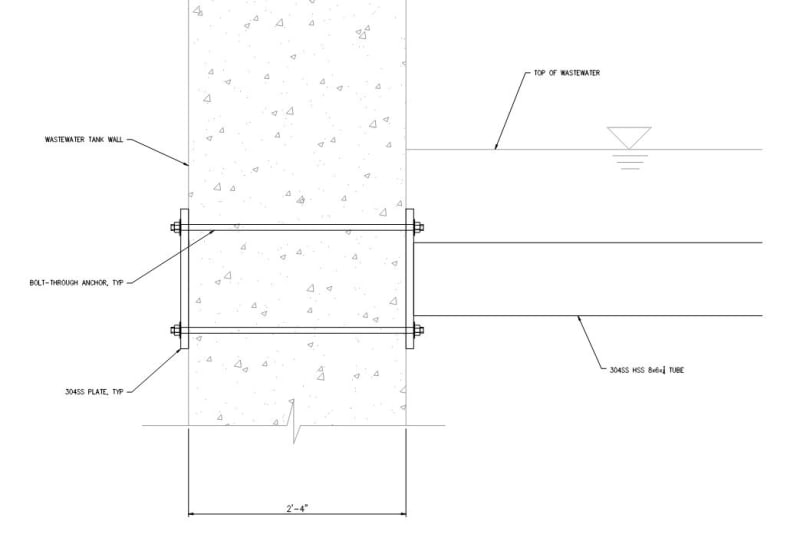
Hi all,
I am currently working on a bracing design for a rectangular, above-ground wastewater tank which is already in place. New stainless steel tubes (acting almost entirely in tension) are being installed to brace the tank walls. Due to the high tension loads (ranging from 40-kips to 60-kips), I am thinking a through-bolt connection with a baseplate on each side is the safest approach for anchoring these beams to the concrete walls.
I am thinking of checking the wall for punching shear at the baseplate in compression, and making sure the anchor rods have sufficient tensile strength for the connection. Is there anything else I should check for this, or does anyone have any advice on a design guide for a concrete wall through-bolt connection?
Thank you!
Grant
